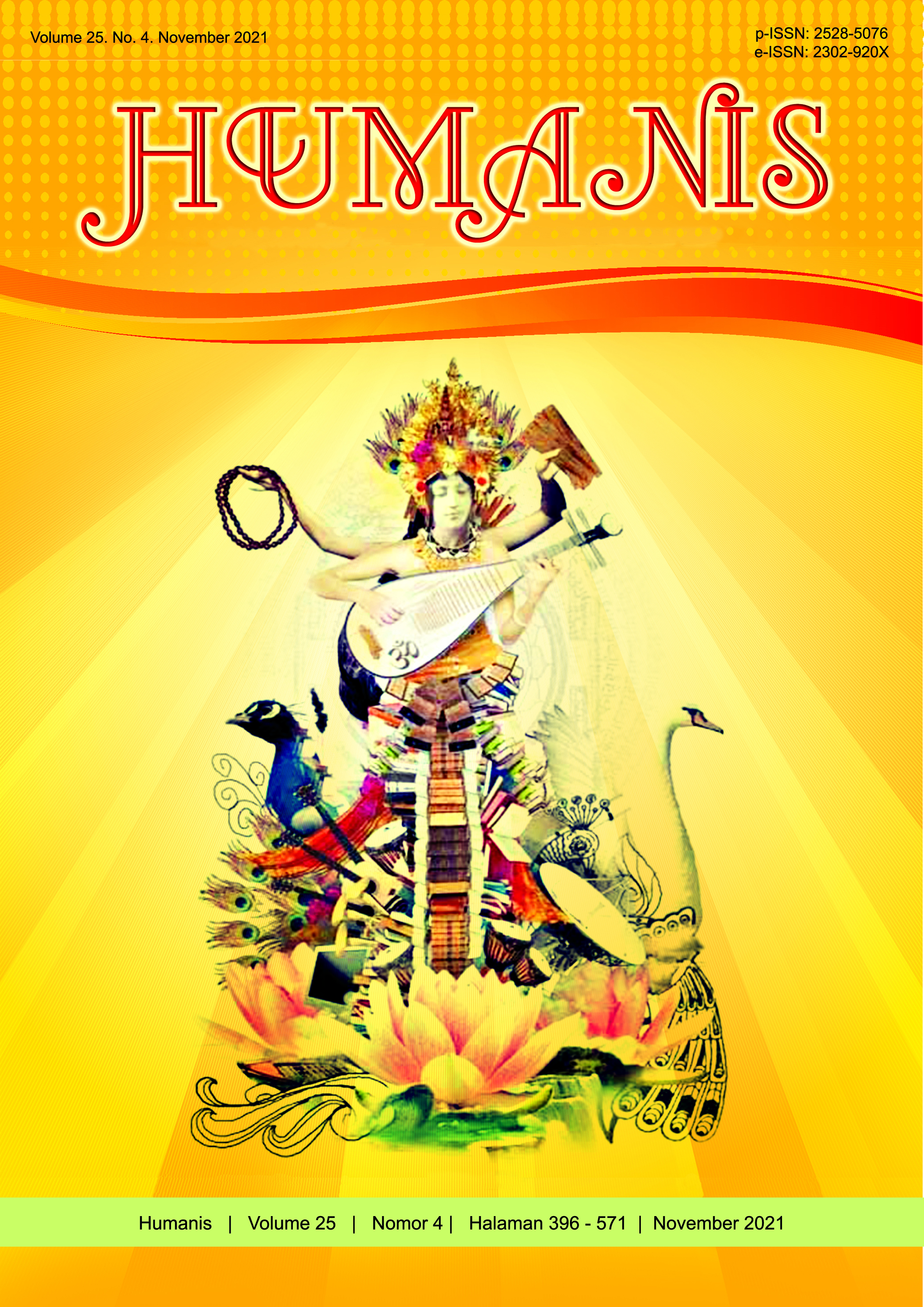Representasi Multilingualisme Penanda Sarana Pariwisata di Kawasan Wisata Canggu
Abstract
This paper, as part of the study of Landscape Liguistics, aims to reveal how the multilingualism is represented in the public space in this area. In addition, to find out how the structure of writing and language patterns used in public spaces in the area. To collect the data, the method used in this research is the documentation method, then the data was analyzed quantitatively and qualitatively. The results showed that there were 13 languages ??used in public spaces, especially on markers of existing tourism facilities. English is the most dominant language used, Latin writing is also used in almost all markers, and also the language pattern that uses 2 - 3 different languages ??has shown this area to be considered as an international region.
Downloads
References
Ben-Rafael, Eliezer, Elana Shohamy, Muhammad Hasan Amara, dan Nira Trumper-Hecht. 2006. Linguistic Landscape as Symbolic Construction of the Public Space: The
Case of Israel. International Journal of Multilingualism 3, no. 1 (April): 7–30.
Brown, K. D. (2012) The linguistic landscape of educational spaces: Language revitalization and schools in Southeastern Estonia. In D. Gorter, H.F. Marten and L. Van Mensel (eds) Minority Languages in the Linguistic Landscape (pp. 281–298). Basingstoke: Palgrave Macmillan.
Budarina, Olena. 2015. “Linguistic Landscape Research: Some Methodological Remarks”. Scripta Neophilologica Posnaniensia. TOM 15: Strony: 35-42. DOI 10.7169/snp.2015.15.03
Cenoz, J. And D. Gorter. 2006. “Linguistic landscape and minority languages”. In: Gorter, D.(Ed.). Linguistic landscape: a new approach to multilingualism. Clevedon: Multilingual Matters. 67–80.
Erikha, Fajar. 2018. Konsep Lanskap linguistic pada Papan Nama Jalan Kerajaan (Rajamarga): Studi Ksus Kota Yogyakarta. Paradigma Jurnal Kajian Budaya, Vol.8 No.1 : 38-52
Fajri, Khairul. 2016. Pengertian Pariwisata, Jenis-jenis dan Macam-macam serta Sarana dan Prasaranya. https://www.dataarsitek.com/2016/11/pengertian-pariwisata-jenis-jenis-dan-macam-macam-serta-sarana-prasarananya.html
Gorter, D. (Ed.). 2006c. Linguistic landscape: a new approach to multilingualism. Clevedon: Multilingual Matters.
Gorter, D. and Cenoz, J. (2015) Translanguaging and linguistic landscapes. Linguistic Landscape 1(1), 54-74.
Gorter, Durk. “Method and technique of Linguistic Landscapes research: About Definitions, Core Issues, and Technological Innovations”.
Huebner, Thom. 2006. Bangkok’s L..inguistic Lanscapes: Enviromental Print, Codemixing and Language Change. Clevedon: Multi Lingual Matters Ltd.
Landry, Rodrigue, dan Richard Y. Bourhis. 1997. Linguistic Landscape and Ethnolinguistic Vitality: An Empirical Study. Journal of Language and Social Psychology 16, no. 1: 23–49.
Mulyawam, I Wayan. 2017. “Glocalization of Balinese Language as Outdoor Sign in Desa Adat Kuta Bali”. International Journal of Education, Universitas Pendidikan Indonesia, Vol.10 Ni.1, 2017. 82-87
Puzey, Guy. 2016. Linguistic Landscapes. Dalam The Oxford of Handbook of Names and Naming, ed. Carole Hough, 476–496. Oxford: Oxford University Press
Rostika, Melida. Lupakan Kuta dan Canggu yang Padat, Canggu adalah Idola Baru Pulau Bali. https://www.fimela.com/lifestyle-relationship/read/3518794 (retrieved 28 november 2019)


















